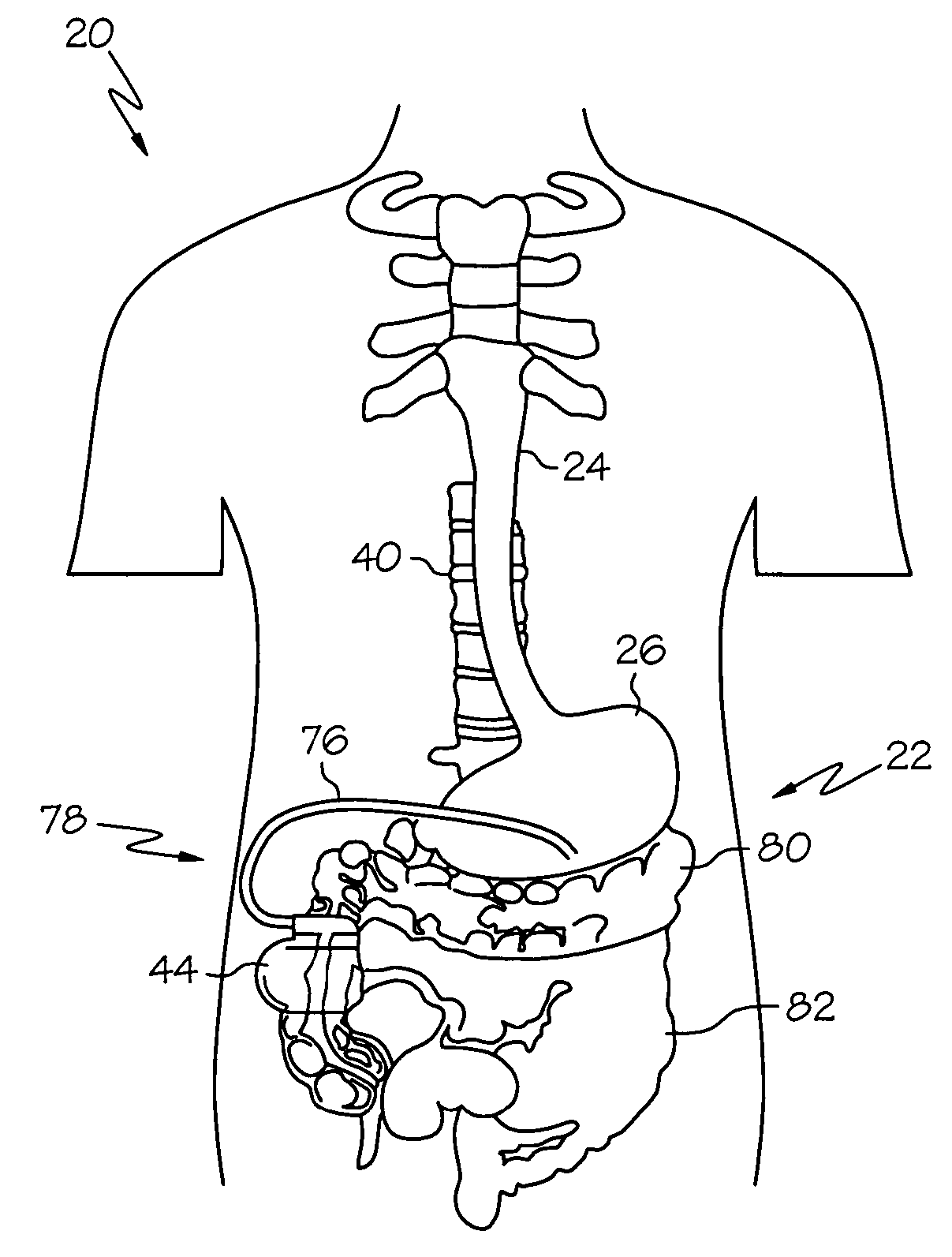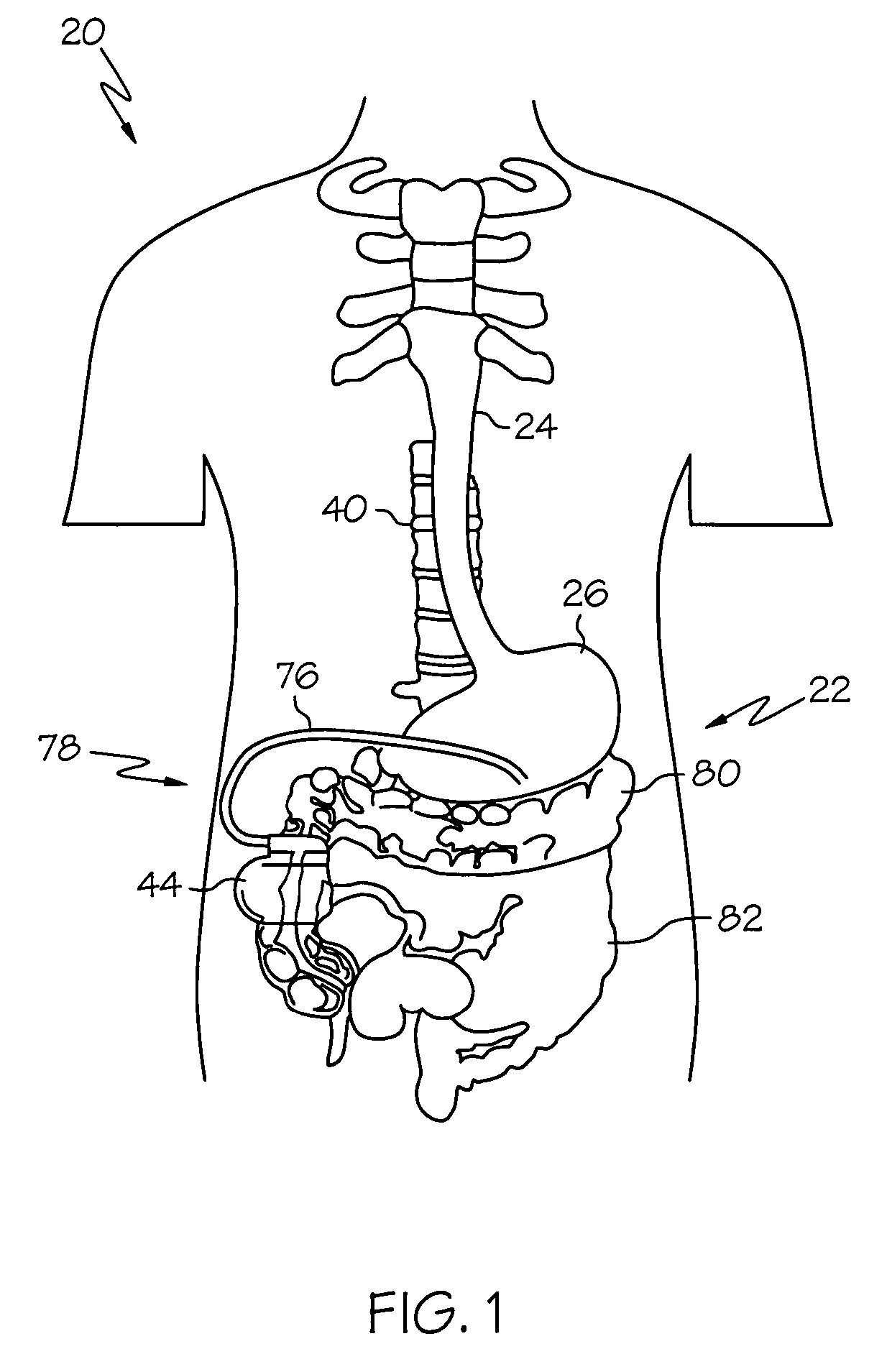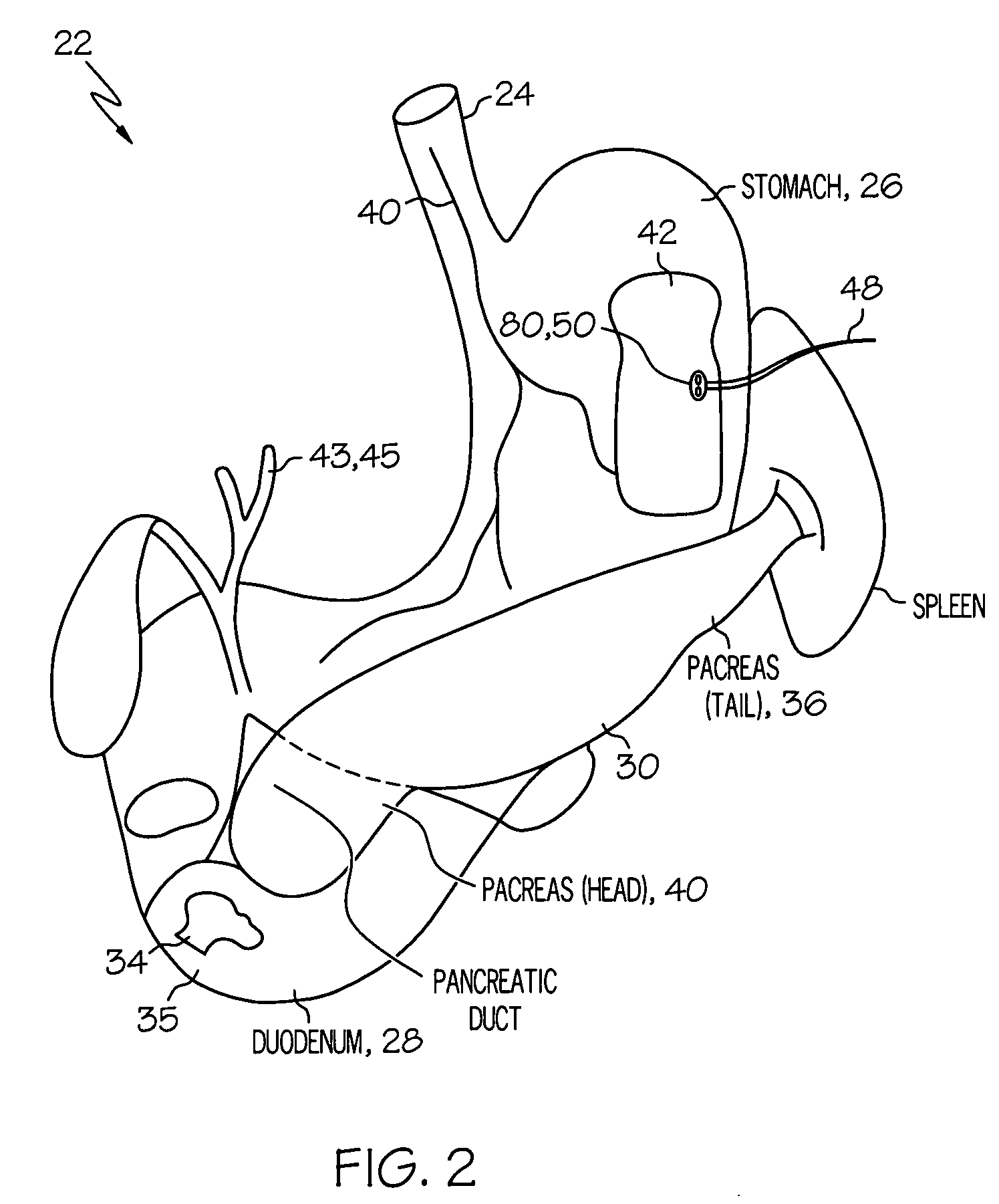Gastroelectric stimulation for influencing pancreatic secretions
a technology of electrical stimulation and pancreatic secretions, applied in the field of medical devices, can solve the problems of difficult treatment, inability to achieve vagal stimulation therapy, and inability to treat patients' previous treatments of pancreatic exocrine and endocrine conditions using drugs and surgery
- Summary
- Abstract
- Description
- Claims
- Application Information
AI Technical Summary
Benefits of technology
Problems solved by technology
Method used
Image
Examples
Embodiment Construction
[0020]FIGS. 1 and 2 show the general environment for using gastroelectric stimulation to influence pancreatic secretions. A patient's 20 digestive system 22 includes the esophagus 24, stomach 26, duodenum 28, and pancreas 30. The stomach 26 plays a central role in influencing the digestive system 22 by acting as a pacemaker through myoelectrical activity that creates a variety of signals such as a gastric slow wave 27 (FIG. 6a) of about 3.0 cycles per minute as described in the following publication: Kenneth Koch et al., Electrogastrography, An Illustrated Guide To Gastrointestinal Motility 2nd Ed., pp. 290–307 (1993).
[0021]The duodenum 28 is the first division of the small intestine that is about 25.0 cm in length and includes the pars descendens into which the pancreatic 30 ducts open. Duodenal chyme 34 is a semi-fluid mass of partly digested food with a typical normal daily volume of about 4.0 to 7.0 liters that passes from the stomach 26 into the duodenum 28. The duodenum 28 has...
PUM
 Login to View More
Login to View More Abstract
Description
Claims
Application Information
 Login to View More
Login to View More - R&D
- Intellectual Property
- Life Sciences
- Materials
- Tech Scout
- Unparalleled Data Quality
- Higher Quality Content
- 60% Fewer Hallucinations
Browse by: Latest US Patents, China's latest patents, Technical Efficacy Thesaurus, Application Domain, Technology Topic, Popular Technical Reports.
© 2025 PatSnap. All rights reserved.Legal|Privacy policy|Modern Slavery Act Transparency Statement|Sitemap|About US| Contact US: help@patsnap.com



